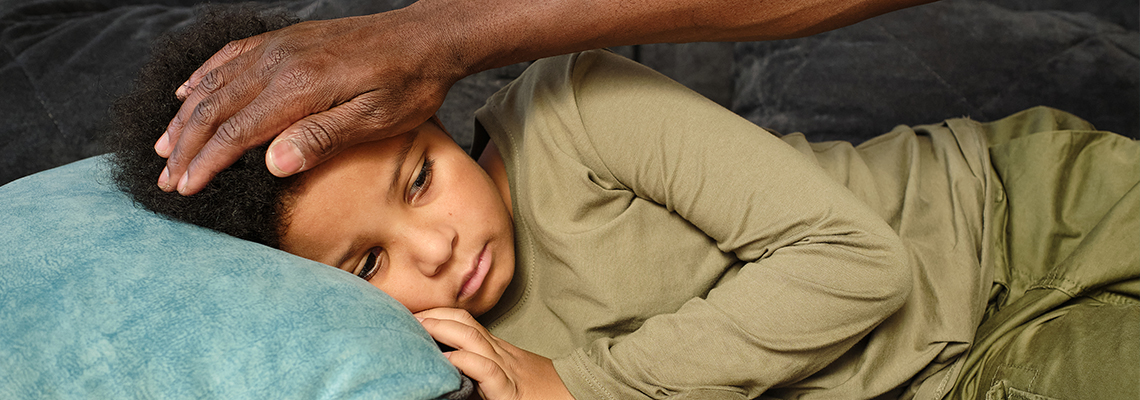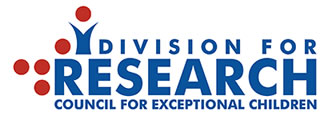
What is pain?
Our brains are the key body part to feeling pain. There are nerve fibers that are connected all over our bodies and these fibers carry signals to and from the brain. These signals can be more or less intense. When there are fewer pain signals or less intense signals, we feel less pain. How a child experiences pain is impacted by many different things including but not limited to: their past experiences of pain, genetics, feelings, thoughts, and how their parents respond to the pain. A child and their family can learn ways to 1. Change how intense the pain signals are and 2. Cope with pain in helpful ways.
There are two main types of pain: acute and chronic. Pain that lasts three months or more is called chronic pain, and it’s not that rare for a child or teen to experience chronic pain. Chronic pain can occur anywhere in the body (for example, headaches, belly, or back pain) and may always be there, or might come and go. Children can experience chronic pain for many different reasons. Acute pain lasts less than three months and often has a direct reason for why it’s happening. Some examples for acute pain include: a sprained ankle, body aches from the flu, or an injury from cheerleading practice. The below tips are focused on managing acute pain. However, some of these tips may also be helpful for children and teens facing chronic pain.
How to talk to your child when they’re feeling pain:
- What we say matters: Reassurance is an important part of helping your child when they are in pain. But how we provide reassurance is just as important. Phrases like “We’ll manage this together” and “I’m right here with you” focus on your support of your child. Phrases like “It’ll be okay”, “I don’t like this either”, and “It doesn’t hurt that much” are less helpful. Do not minimize their experience, and keep the focus on support and managing their discomfort.
- Provide reassurance, but not too much: Reassurance is a crucial part of helping your child with pain, but we can sometimes provide too much reassurance. Reassurance is best used in combination with promoting use of coping skills (see below), since reassurance alone will not help your child manage their pain successfully.
- Don’t overly focus on the pain: Ask the most important questions, validate their experience, and then redirect to reassurance and other skills for managing pain. By focusing on the pain, we can accidently increase the pain our child is experiencing.
Managing acute pain
- Distraction: Distraction can be a very effective tool. It can include talking about other topics besides the pain, watching a video together, or any activity that keeps your child engaged. Don’t give up on a distraction too quickly, it can take a few minutes for a child to be engaged.
- Belly Breathing: Teaching and practicing calm breathing can help your child relax their body when experiencing pain. You can use videos to help, for example:
- A song about belly breathing: https://www.youtube.com/watch?v=_mZbzDOpylA
- Square breathing: https://www.youtube.com/watch?v=PHQ7YZYRAms
- Brief belly breathing: https://www.youtube.com/watch?v=KssedxpbLpg
- Use Imagery: Imagery helps a child use their imagination to calm their body. This can be especially helpful when they are experiencing a medical procedure, as well as during times they need to relax their body. You can use videos to help, for example:
- Magic treehouse: https://www.youtube.com/watch?v=WhoIeqDJM6E
- Beach: https://www.youtube.com/watch?v=oeusbGFWPtY&t=26s
- Provide self-soothing options: Most children have their own self-soothing skills and you as their caregiver can help them get started. They may soothe themselves with a favorite stuffed animal, a stress ball or fidget, or a favorite type of music. It’s good to have conversations with your child about what they find soothing as a way to prepare.
- 5 senses mindfulness: This is an exercise you can do with your child to help them focus on the present moment and self-soothe.
Ask your child to….
- Name 5 things they can see
- Name 4 things they can touch and name them while touching them (perhaps the clothes they’re wearing or objects in their hand)
- Name 3 things they can hear
- Name 2 things they can smell
- Name 1 thing they can taste
Conclusion: All children will experience acute pain at some point and some children will experience chronic pain. It’s important to help children focus less on their pain so they can decrease the pain signals sent to their brain. Parents can model calm responses to pain. It is best for parents to focus on their child using helpful coping skills, rather than providing too much attention to the pain itself or ignoring it completely. There are many ways you can help your child manage their pain including distraction, belly breathing, and mindfulness.
More ways to learn
Resources for chronic pain:
Pain related to shots? Check out this blog:
Proper Citation for this blog post:
Adame, H & Hahn, A (2023, December 19) How to Help Your Child Manage Pain. Retrieved from https://infoaboutkids.org/blog/how-to-help-your-child-manage-pain
References for Post:
Coakley, R., & Wihak, T. (2017). Evidence-Based Psychological Interventions for the Management of Pediatric Chronic Pain: New Directions in Research and Clinical Practice. Children (Basel, Switzerland), 4(2), 9. https://doi.org/10.3390/children4020009
Palermo T. M. (2020). Pain prevention and management must begin in childhood: the key role of psychological interventions. Pain, 161 Suppl 1(Suppl), S114–S121. https://doi.org/10.1097/j.pain.0000000000001862
















